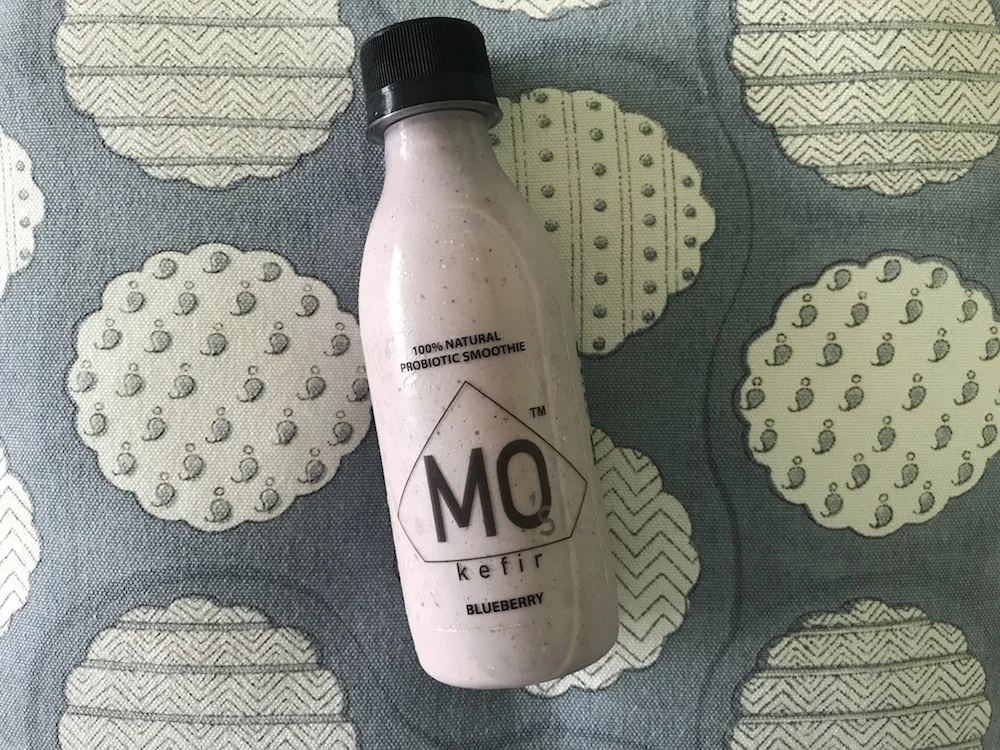Mo's kefir

Growing up there was one thing that my mum, my nani, and everybody in the from-Uttar Pradesh side of the family said: happy gut, happy everything. Well, they didn’t actually say ‘gut’, because this was usually in the form of a hindi or urdu proverb type thing but the message is the thing and the message is as loud today as it ever was. Everything affects gut function, and no one can deny that it is hard to retain a sunny vibe when you have a glum tum clamouring for attention.
Here’s the thing, it’s not just what you eat that affects your gut. We know this now. Thanks to loads of ongoing research on the microbiome we know that microbes live in our stomachs, on our skin, and in all our bodily fluids. There’s more microbes in our body than there are cells, and collectively the genes of this microbiota form the microbiome.
We’ve had a shitty history with these little fellas, obsessively cleaning with antibacterial everything, using those godawful hand sanitisers and overusing antibiotics to try and wipe the little critters out, except… most are good for us, and have lived in peaceful symbiotic existence with us since we first crawled out of the sea. We need them, but we’ve been busy killing them, and as it happens, if they’re not healthy and thriving, we aren’t either.
Many things may affect the microbiome, including diet, lifestyle, environment, and stress. It begins when we’re born, and babies have their first wash of essential bacteria as they travel down the birth canal. Babies born by caesarean section, as I was, don’t get this little joyride and some studies indicate that these bubs, deprived of this immunity-building bacteria as they’re born, are more prone to obesity and other immune dysfunctions as a result.
“We need them, but we’ve been busy killing them, and if they’re not healthy and thriving, we aren’t either.”
But what can you do now, is the real question? I have been on a zillion rounds of antibiotics, I will admit, and I cannot even fathom what a warzone my own microbiome must be, those poor bastards. Still, I am making amends in many ways, like chucking out all washing products with triclosan or other antibacterial agents in my home, minimizing antibiotic use unless absolutely necessary, and supplementing with probiotics and digestive enzymes. I also add lemon and apple cider vinegar to my morning tonic to increase digestive stomach acids, and I only eat fruit on an empty stomach or at least twenty minutes before meals so it doesn’t ferment and disrupt the digestive process. And finally, I’m making sure my diet is a diverse one, with lots of fibre from vegetables, polyphenols from nuts, seeds, and olive oil, and ensuring I’m getting a good dose of prebiotics (that’s pre, not pro), i.e. eating the foods that contain actual microbes, like yoghurt, kimchi, miso, kombucha, and kefir.
Yoghurt we all know, and kombucha’s also now pretty widely known, but kefir is a cousin of yoghurt that you should probably get to know better. A fermented milk drink that’s like a more-fizzy lassi, kefir packs a good hit of calcium, is lower in lactose (so drinkable for most lactose intolerant people as well) and when consumed long-term, actually improves your body’s ability to digest lactose.
Historically, kefir grains were used to prolong the shelf life of milk. These little clusters of bacteria and yeast look like grainy lumps of curdled milk, but when you allow these grains to rest in milk over a 24-hour period, they quickly get to work, first fermenting the milk into a yoghurt-resembling soup, following which it turns into a thicker version that’s even more loaded with probiotics, vitamins, and minerals.
Curious? Go online and find someone with kefir grains to share in your city and make your own. Lazy? Hi, me too. In Mumbai I can unreservedly recommend Mo’s kefir, whose little bottles of kefir are rich, sour, and strangely addictive. I tried the vanilla honey which was delicious, creamy, and super easy going down, as well as the blueberry kefir which was a little less sweet and equally lovely. If you prefer yours salty, there is a Himalayan pink salt-laced chaach that might be up your alley, or just try the plain one and play with it to make it your own. Mo’s delivers to homes across South Mumbai, or else find them at a short list of cafes and stores across the city.
To order Mo’s Kefir email moskefir@gmail.com, see their website here. They deliver from Cuffe Parade to Haji Ali, and a delivery service to Khar is launching soon. Rs 300 for 3 bottles of 200 ml each.

